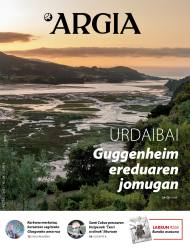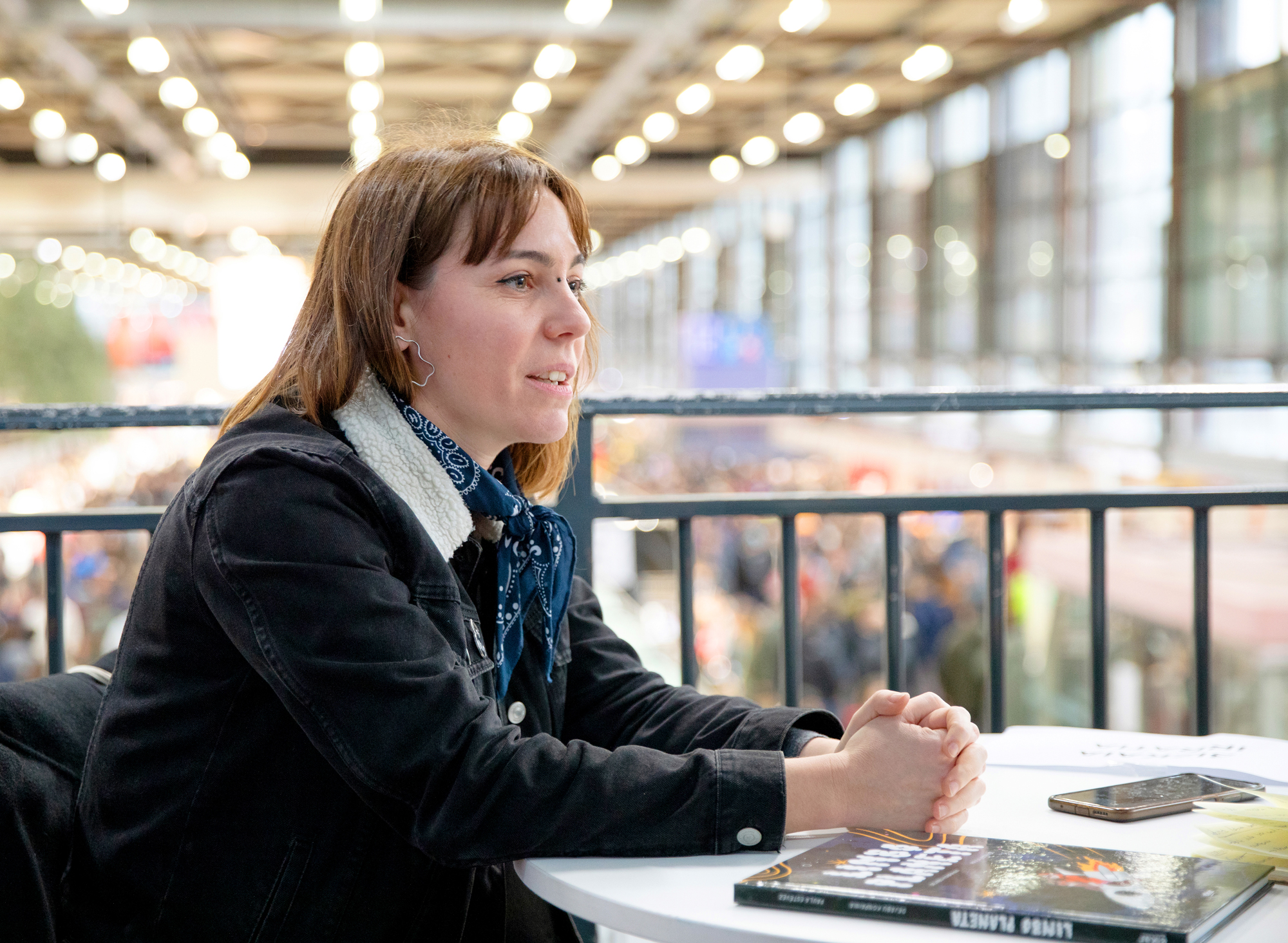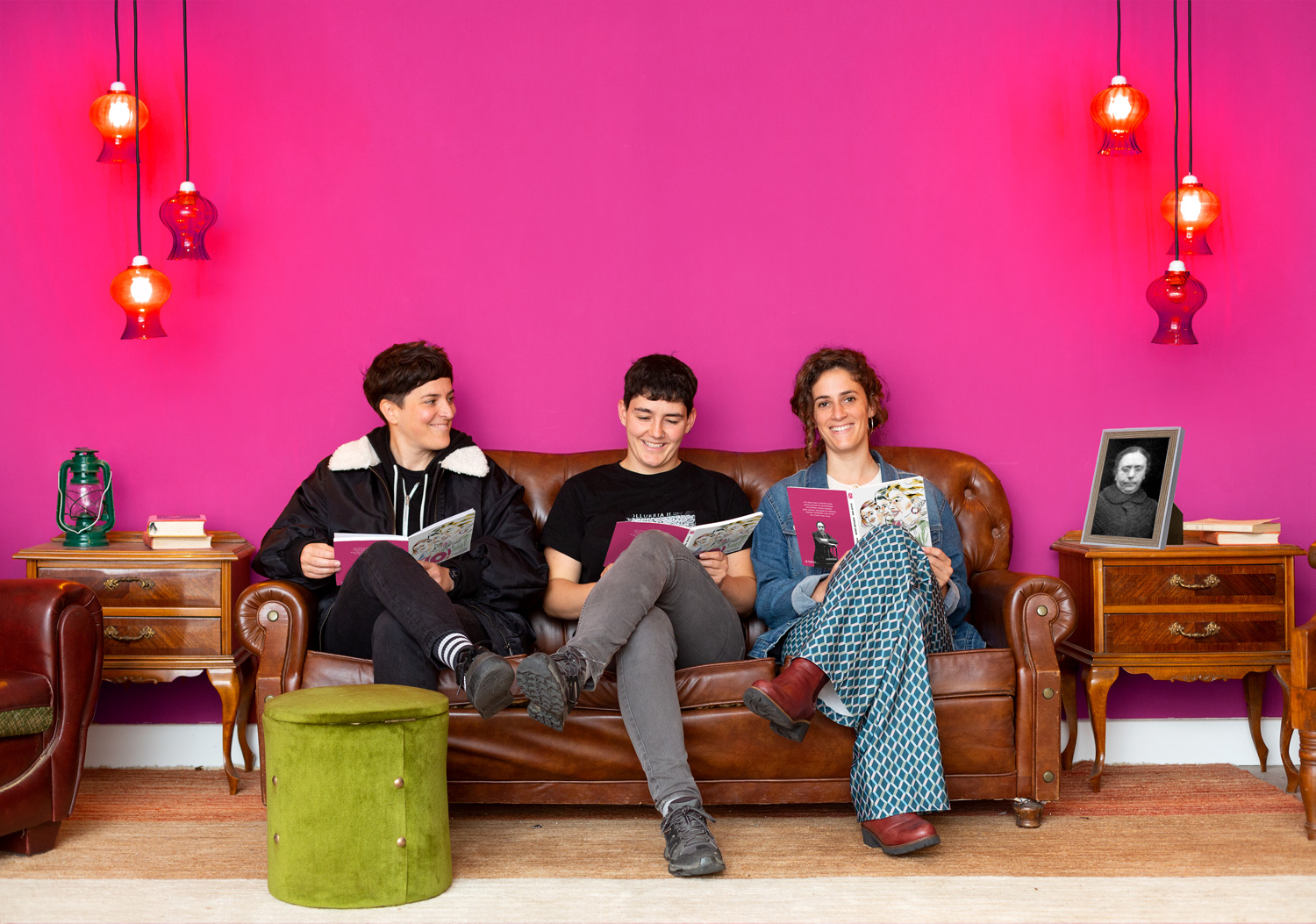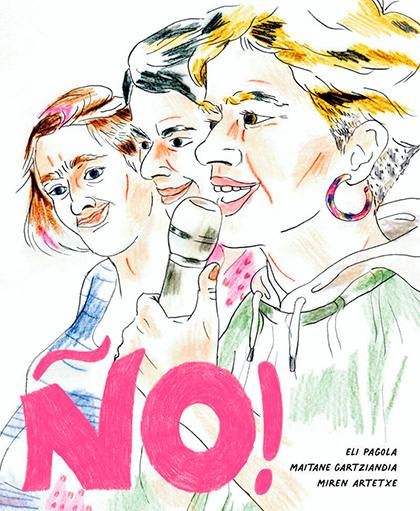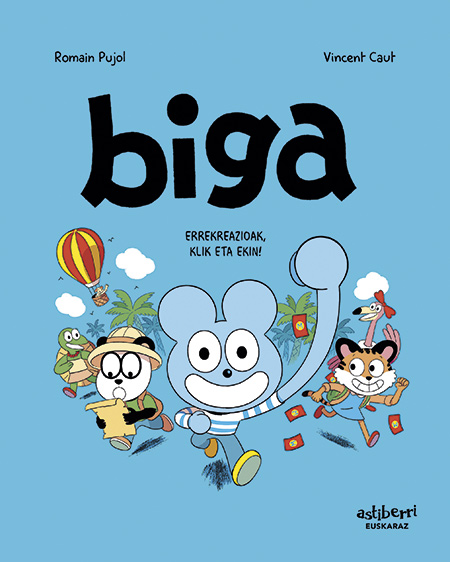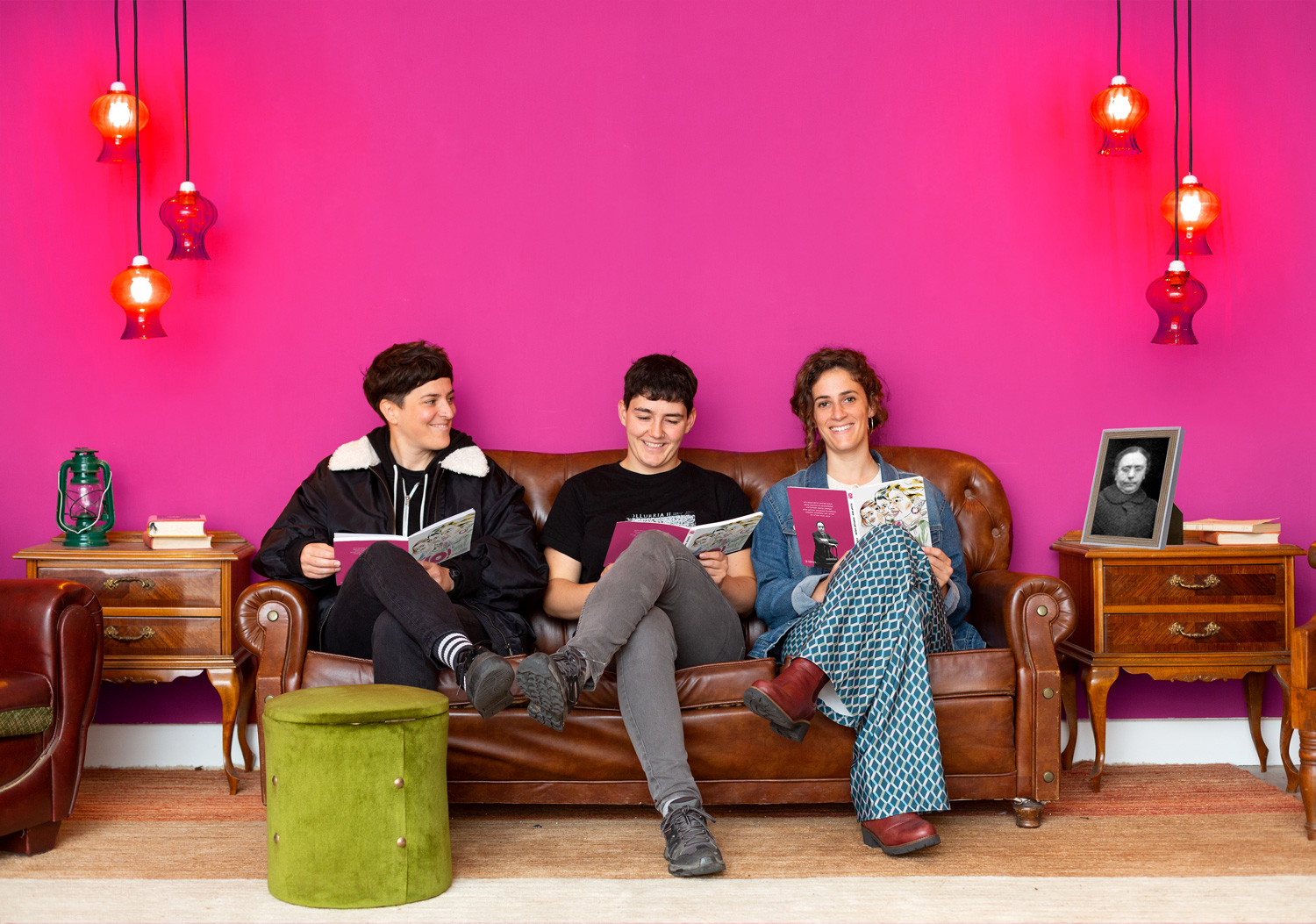Jump from me to you in Tupustea
- One year after the publication of the first comic book anthology, Tupust has just published its second volume. groups. After the presentation of the book in the Koldo Mitxelena Kulturunea of Donostia, we have continued to tell more about the work that has just taken Paula Estévez, Ainara Azpiazu Aduriz and Maite Gurrutxaga, members of the Komikigunea collective from the oven.
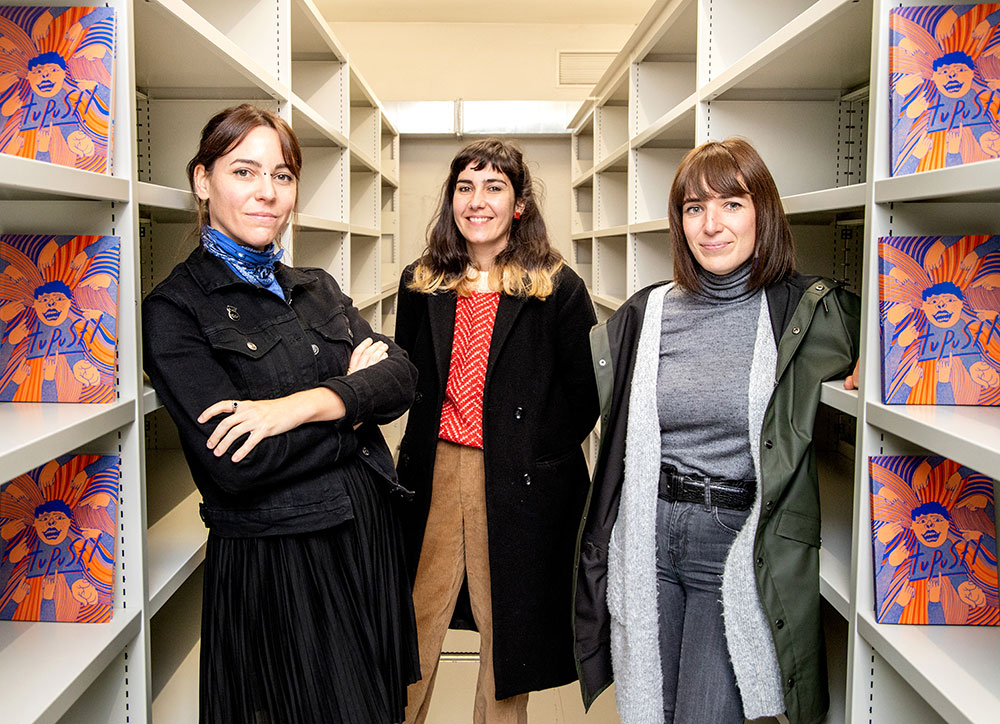
With the intention of doing something in common, in 2016, several women from Euskal Herria began to meet and Tupust closed with quotes. Collective. Considering that the voices of the edges were also scarce in the construction of the comic book in Basque, the conciliation of the comic book and feminism was one of the main goals that were set. But, as mentioned in number 1, more objectives are listed: to form a community of authors, to break with this network new projects, to organize projects, to break with rigid forms of creation and to confuse professional authors with amateurs. Following the roadmap, eight people led the collective – Amets Gurbiola, Maitane Gartziandia, Paula Estévez, Irati Eguren, Maite Caballero, Loinaz Lekuona, Ainara Azpiazu and Maite Gurrutxaga – and invite other creators to participate in each issue. Thus, along with the works of the creators behind the project, they publish works by invited artists in each anthology. In the latter, Dom Campistron, Irati FG, Regina Salcedo, Yolanda Mosquera, Mikel Larraioz, Ane Zaldibar, Aintzane Usandizaga, Wednesday (Maddi Zumalabe and Jon Aranguren), Susana Martín, Irkus M. The reader can find signatures from Zeberio, Josune Urrutia and Raisa Álava.
The first Tupust focused on the “I”! (Txalaparta, 2019), whose central theme is “Zu”. So it was decided in the initial meetings, turning to the idea of forming a trilogy. Believing that in the first work the formula worked, they decided to continue as planned. The second anthology encompasses seventeen works of 21 creators, and although each one of them makes its own interpretation of the given theme as a starting point, the members of the collective consider that having the same base gives homogeneity to the work. For the result to have a stylistic unity, on this occasion, leaves have also been printed in two inks, orange and blue, in order to unite the aesthetics and the different narrative forms of the authors. They are satisfied with the result, thanks to the experience of the first edition, as they have also had the opportunity to correct errors and improve: replace matte skin with plasticized and add flaps. As they speak, they are happy to use the fruit of their work.
Choice of self-publishing
Despite accumulating experience and knowledge with the first edition, the second has not been the result of an underutilized process. “From this we have learned many things, which has facilitated the exit of the second book. But then a factor that did not exist in the previous one, that of self-publishing, has been introduced. And this has lengthened the process a bit,” explains Gurrutxaga. They say book promotion, shipping, etc. have had to take care of the works usually done by publishers. This was not their initial intention, as they were thinking of republishing it with an editorial. However, “we bet on the invited authors, and the best option with them was to go to self-publishing to reach the end,” he says Gurrutxaga.De done, the conditions of the publishers did not allow to publish a work that encompassed all these authors.
She has read about this: “There are very daring works, quite different in terms of narrative, image or theme, or that move away from the comic model that you see as usual. In the environment, there are not many such daring editorials in the field of comics. In general, it can be said that the comic  book published here is quite conservative.” And along the same lines, so does Azpiazu: “The publishers of the Basque Country are happily publishing more and more comics, but I believe that the fear of not being economically profitable continues to come before the products. Because it is true that Euskal Herria is not a comical society.” They consider that there is a precise and limited understanding of the practice of comics: “One tends to think that there is a universal and unique narrative, and what comes out of it is perceived as if it were not part of it, as marginal and negligible,” explains Azpiazu. Tupust! The fact that Spring Magazine in Germany is the most important reference in its creation, seems to you to say a lot about the near picture, for lack of reference.
book published here is quite conservative.” And along the same lines, so does Azpiazu: “The publishers of the Basque Country are happily publishing more and more comics, but I believe that the fear of not being economically profitable continues to come before the products. Because it is true that Euskal Herria is not a comical society.” They consider that there is a precise and limited understanding of the practice of comics: “One tends to think that there is a universal and unique narrative, and what comes out of it is perceived as if it were not part of it, as marginal and negligible,” explains Azpiazu. Tupust! The fact that Spring Magazine in Germany is the most important reference in its creation, seems to you to say a lot about the near picture, for lack of reference.
“One of our intentions was to bring to the center forms of storytelling that we like and care about,” Gurrutxaga said. These intentions have been endorsed by the team, despite the fact that the road is filled with challenges. They clearly state that they would like to make that path with publishers in the future. “An editorial is an important tool,” all three agree.
Faithful readers behind
Although they have had to take on more tasks than they expected as a result of self-publishing, fatigue has not emerged from the process. In addition to the promotion and sale of the book, they are forced to set up a store on the net and, once the establishment was created, they decided to make a pre-sale. The requests followed, demonstrating that the project has a network of readers who support the project and buy without having to see the product. “These people bought it blindly because they liked the first one. Having people on that profile is a treasure,” says Azpiazu.
The latest copies of Tupust! They come to the bookstores and to the houses, where the collective is in the interest of the book's impressions. In that near future, they now have a nailed look, but we have asked them to look at themselves at a longer time. When you ask if you want to publish a third issue of Tupust! In the future, they say it's an uncertainty. “Although we initially set out a trilogy, we still do not know if we are going to publish the third one. After all, teamwork entails great wear and tear, and if you add to it the need to resort to self-publishing…, it is even more wear and tear for us. We will therefore have to see whether we will be publishing the third issue. If we have strength, perhaps,” says Estévez.
SCk Zerocalcareri egindako galdera sorta eta honen erantzunak, jarraian.
Bildumako azken alea izango dela jakinarazi dute: lehenbizikoa Ni-ari buruzkoa izan zen, eta bigarrena Zu. Bigarren hura bezala, autoedizioan kaleratu du honakoa ere.
Ño!
Texts: Illustrations Eli Pagola and Miren
Artetxe: Luz Maitane
Gartziandia, 2023
------------------------------------------------------
Before and after the comic, both on the skin and back provided, as well as inside tapas and tapas, there are images and words... [+]
Biga (5 books)
Screenplay: Illustrations Romain
Pujol: Vincent Seguros
Astiberri
----------------------------------------------------
We've read eleven stories at home to our seven- and nine-year-olds, and I would say that I've never seen them so hooked that with the... [+]
Screenplay
Anker: Gregorio muro harriet
Illustrations: Alex Male
Color: Garluk Aguirre
Harriet, 2023
The Anker comic is located in January 2019. In the Russian regions, near the borders of China and North Korea. It shows the mafias that are flourishing the Siberian... [+]









